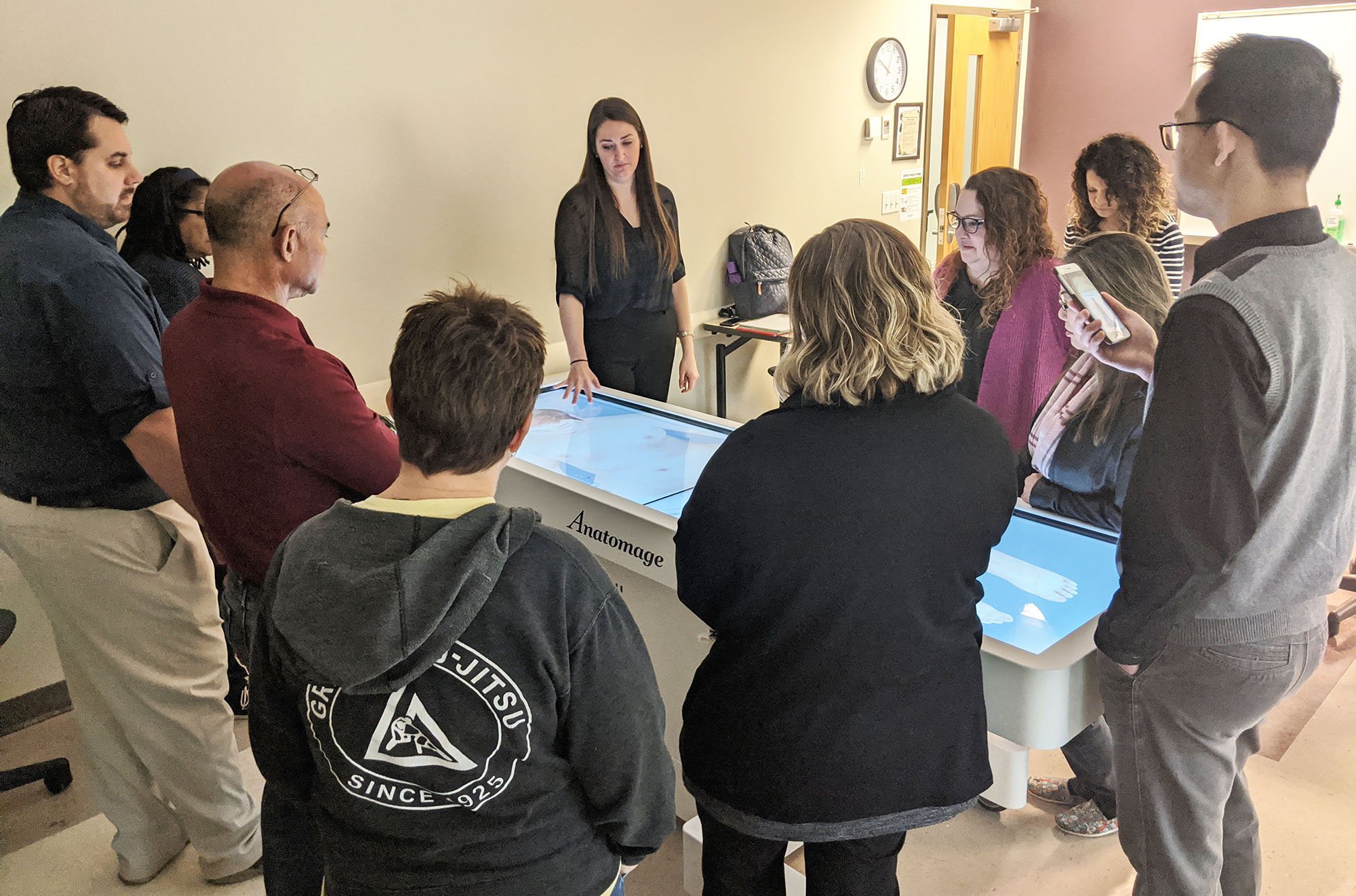College Receives New Dissection Table

Thomas Nelson students soon will be able to use new, state-of-the-art dissection tables.
On a late February morning, some of the parking spaces behind Thomas Nelson's Hampton III building were unavailable because of a large delivery truck. Inside was a "Virtual Human Dissection" table, one of two the College is scheduled to receive.
"These tables have the ability to shift the paradigm of allied and science education at Thomas Nelson," said Paul Long, the interim dean of the Health Professions Division.
While the first table is on the Hampton campus, the one slated for the Historic Triangle campus is expected to be delivered this summer. Still, there's excitement over the delivery.
"It's a pretty snazzy piece of equipment," said Shaheem Abrahams, an associate biology professor who is head of the department, as well as a co-program head of science.
According to the company's website, "The Anatomage Table is the only fully segmented real human 3D anatomy system … The Table allows for exploration and learning of human anatomy beyond what any cadaver could offer."
Jonalyn Gore, program coordinator for Workforce Credentials and Continuing Education, said the College has the most current edition. She said it will be extremely helpful, and useful, for all her classes, from the Clinical Medical Assistant program to phlebotomy to those who want to become a Certified Nursing Assistant. On the credit side, the table will be used for nursing, dental hygiene, and fire and EMS programs. Abrahams said taking all of Thomas Nelson's biology and anatomy classes into account, more than 200 students will use the tables each semester. But he noted it isn't replacing anything in the classroom.
"I'm a hands-on type of person so my labs are all real things: real deer heart, real brains," he said. "So for me, this is going to be interesting to see how I marry the technology with the real. It's just an extension of what we do. The technology's there. It is now how do we use the technology to supplement hands-on?"
Gore and Abrahams participated in training to learn what the table has to offer and how to get the most out of it. More training is scheduled.
"There is more live engagement instead of just a textbook or a video on the screen," Gore said. "I'm blown away with it."
Added Abrahams: "What I did like in the training was the physiology behind it. The conduction system of the heart was pretty amazing."
The College was able to purchase the tables, which cost nearly $80,000 each, through the Non-Credit Higher Education Equipment Trust Fund. The money was appropriated by the state legislature to the VCCS.
Said Dr. Susan English, Vice President of Academic Affairs: "I am delighted we can provide such technology to our students … Special kudos to Eddie Swain and Paul Long for navigating the procurement and delivery options."
